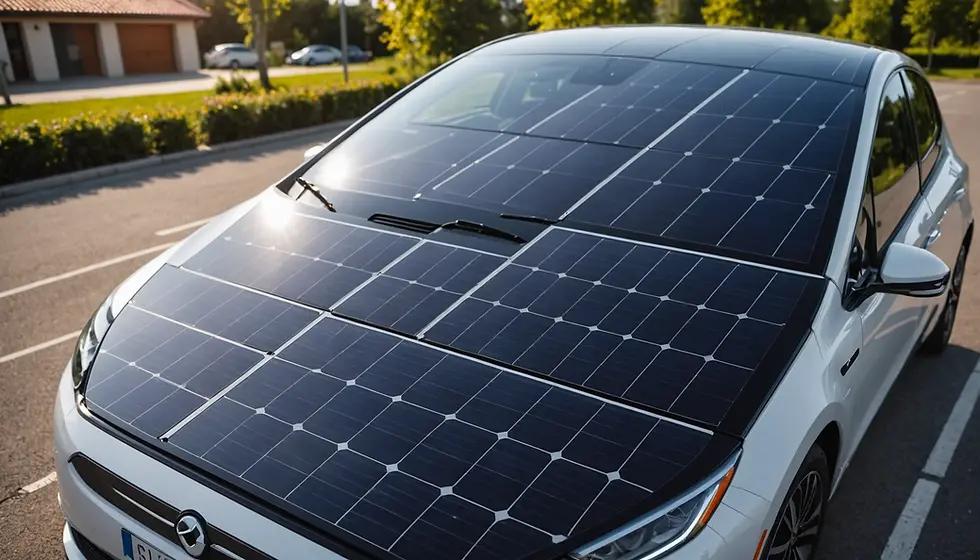How Self-Charging Technology is Shaping the Future of Travel: A Paradigm Shift in Unknown Territory
- Menno Drescher

- Jan 20
- 4 min read
Traveling has always been an exhilarating experience, filled with discovery and adventure. However, the challenge of keeping devices charged while on the go can sometimes dampen the excitement. As we step into a future increasingly shaped by technology, the rise of self-charging devices is set to transform our travel experiences. This shift offers convenience and highlights the need for sustainable practices, ensuring that future generations can enjoy travel without significantly impacting the environment.
In this blog post, we will explore how self-charging technology is reshaping the travel landscape, the benefits it brings to travelers, and what we can expect in the coming years.
The Rise of Self-Charging Technology
Self-charging technology has made remarkable progress. Advancements in materials science and energy harvesting now allow devices to recharge themselves using methods such as solar energy, kinetic energy, and even thermal gradients.
For example, some new backpacks come equipped with solar panels that can generate enough power to charge smartphones or cameras during a day of hiking. Similarly, shoes designed with energy-harvesting technology generate electricity with every step, providing power to essential devices without the need for traditional outlets.

With the growing demand for eco-friendly products, manufacturers are responding by incorporating self-charging capabilities into various travel accessories. This shift fosters innovation and addresses the urgent need to reduce environmental impact, setting the stage for a greener future in travel.
Advantages for Travelers
The benefits of self-charging technology are substantial and go beyond mere convenience. Here’s a closer look at how travelers stand to gain:
1. Increased Mobility
Self-charging devices offer a level of freedom that traditional power sources cannot. Travelers are no longer tethered to the availability of outlets, allowing for greater exploration.
Imagine hiking in a remote area, where the nearest charging station is hours away. With a solar-powered backpack, you can keep your phone and camera charged as you take in breathtaking views. This freedom enhances your experiences, letting you explore more without worrying about battery life.
2. Reduced Environmental Impact
With climate change a growing concern, many travelers are increasingly mindful of their ecological footprint. Self-charging technology plays a pivotal role in reducing energy waste by promoting the use of renewable energy sources.
For instance, solar gadgets can capture the sun's energy, lessening the reliance on traditional power. By incorporating these technologies into travel gear, we can collectively work towards a more sustainable environment.

3. Cost-Effectiveness
While the initial investment in self-charging technology may be higher, the long-term savings can be significant. These devices reduce the need for spare batteries or multiple charging devices, ultimately lowering costs for frequent travelers.
Moreover, many self-charging products are designed for durability. For instance, models with high-quality solar panels are expected to last for years, making them a smart investment for those who travel frequently or spend extended periods abroad.
Innovative Products on the Market
The evolution of self-charging technology has led to several exciting products designed for travelers. Here are a few noteworthy innovations:
Solar-Powered Backpacks
Solar-powered backpacks are at the forefront of this movement. These backpacks have built-in solar panels that convert sunlight into usable energy, empowering adventurers to keep their devices charged, whether trekking through forests or lounging on the beach.
Kinetic Energy Devices
Some companies are producing wearable technology that captures energy through movement. These devices can charge smartphones or fitness trackers as travelers walk or run, eliminating the need for direct sunlight and allowing for charging any time.
Self-Charging Power Banks
Power banks are essential for modern travel, but their limited battery life can be frustrating. Self-charging power banks that utilize solar or kinetic energy recharge themselves on the go, ensuring you always have the backup power needed for long trips.

The Future of Travel
Looking ahead, self-charging technology will likely bring several exciting changes to the travel industry. Here are some trends to watch:
Integration with Smart Devices
Future advancements may lead to integration of self-charging capabilities into everyday devices. Imagine laptops, smartphones, and tablets equipped with built-in solar panels or kinetic charging systems, offering power without the need for traditional outlets.
Sustainability as a Core Value
The travel industry is gradually recognizing the importance of sustainability. As consumer preferences lean more towards eco-friendly options, manufacturers will likely focus on self-charging technology in travel gear design. A survey found that 73 percent of travelers consider sustainability important in their travel decisions, revealing a growing demand for greener options.
Collaborative Innovations
Expect to see increased collaboration across industries focused on self-charging technology. This may include partnerships between engineering, design, and sustainability experts to create more efficient charging methods that enhance the travel experience.
Embracing the Future of Travel
The future of travel is closely tied to advancements in technology, especially self-charging solutions. By enhancing mobility, promoting sustainability, and offering cost-effective options, these devices will revolutionize how we explore the world.
As we adopt these innovations, let's remain mindful of our impact on the planet. Ensuring that future generations can enjoy the excitement of travel is vital. Whether you choose a self-charging backpack or a kinetic energy device, you can embark on adventures with the assurance that your devices will remain powered.
As you prepare for your next journey, consider how self-charging technology can enhance your travel experience. The future offers exciting possibilities, and it's time to embrace them!



Comments